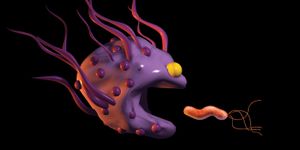The genetic culprit behind a rare recessive disorder has been identified, further allowing for great reaches into personalized medicine. The disorder is characterized by intellectual disability, epileptic seizures, and hypotonia, a condition causing decreased muscle tone (
MedlinePlus).
From the University of Geneva, lead author Periklis Makrythanasis and a group of scientists looked at families with symptoms of the recessive disease that also came from the same ancestor, also referred to as “inbred groups” or “consanguineous” families. In order for the family to be considered for examination, several of the family members had to be experiencing the three symptoms.
Through extensive genetic sequencing of family members presenting symptoms, Makrythanasis and his team found the gene responsible for the three characteristic symptoms, called PIGG.
PIGG is a vital component of the body’s protein production chain, and it encodes an enzyme that regulates processing and modification of other important proteins. When PIGG cannot function normally due to mutation, the same important proteins are not processed normally, resulting in the three symptoms of this recessive disorder. Makrythanasis’ study was recently published in
The American Journal of Human Genetics.
With their genetic sequencing studies, the scientists were able to confirm PIGG’s direct role in prompting the disease. In addition, they used a database called “Matchmaker” to see if other people in the world with the same three symptoms also had the same mutation. They were successful.
Now doctors have a mutation to search for in families where this recessive disorder is known to be a risk, even before a baby is born.
"As personalized genetic diagnosis becomes possible, this disease will be identified among other people presenting the same symptoms,” Makrythanasis said. “These results also pave the way for future new treatment. To solve a problem, you need to identify the cause, which is what we have done here.”
Source:
University of Geneva









